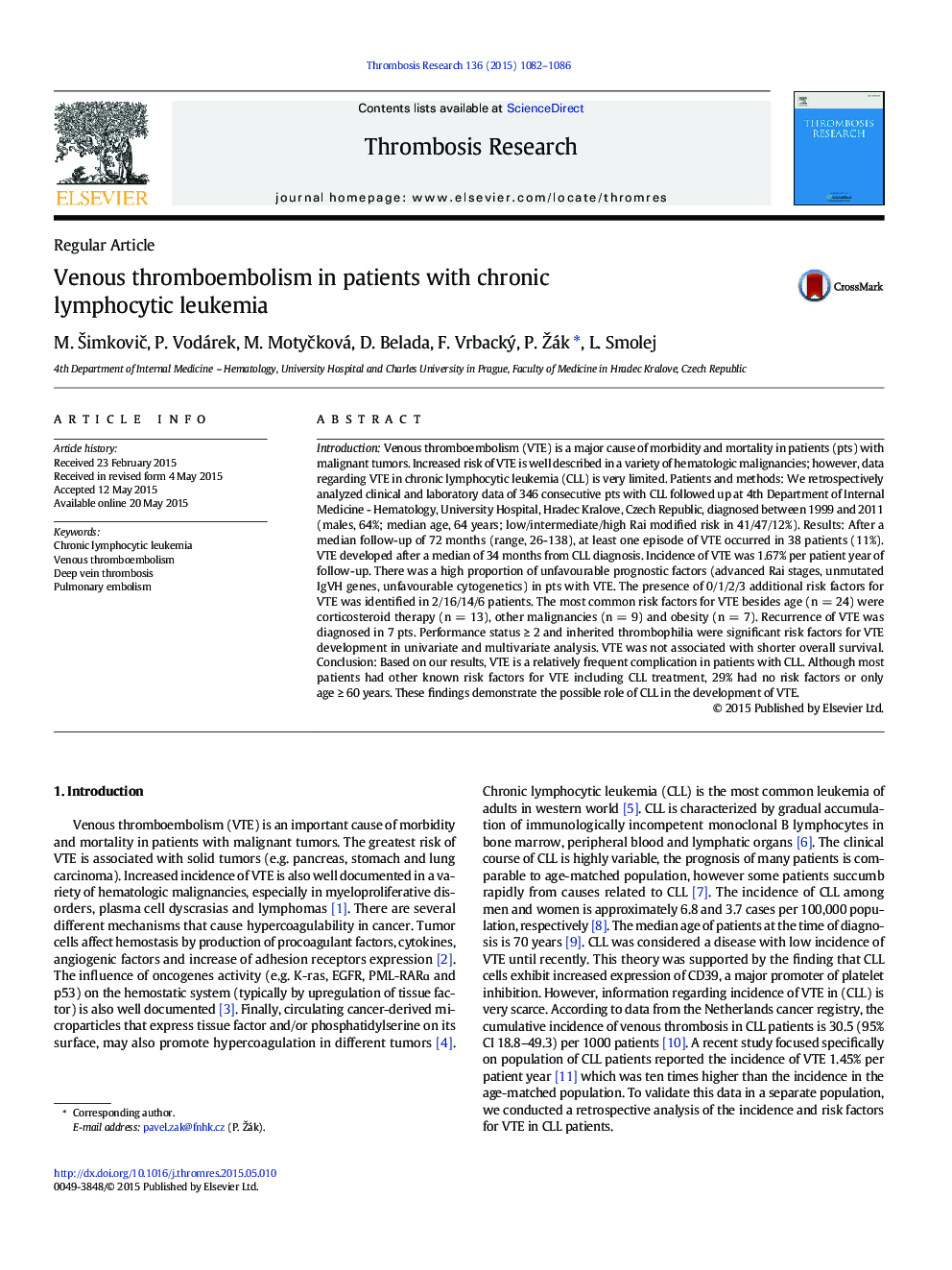| Article ID | Journal | Published Year | Pages | File Type |
|---|---|---|---|---|
| 6000987 | Thrombosis Research | 2015 | 5 Pages |
â¢Venous thromboembolism (VTE) is a relatively frequent complication in patients with CLL.â¢VTE is not associated with shorter overall survival in CLL patients.â¢Our findings support the role of CLL in the development of VTE.
IntroductionVenous thromboembolism (VTE) is a major cause of morbidity and mortality in patients (pts) with malignant tumors. Increased risk of VTE is well described in a variety of hematologic malignancies; however, data regarding VTE in chronic lymphocytic leukemia (CLL) is very limited. Patients and methods: We retrospectively analyzed clinical and laboratory data of 346 consecutive pts with CLL followed up at 4th Department of Internal Medicine - Hematology, University Hospital, Hradec Kralove, Czech Republic, diagnosed between 1999 and 2011 (males, 64%; median age, 64 years; low/intermediate/high Rai modified risk in 41/47/12%). Results: After a median follow-up of 72 months (range, 26-138), at least one episode of VTE occurred in 38 patients (11%). VTE developed after a median of 34 months from CLL diagnosis. Incidence of VTE was 1.67% per patient year of follow-up. There was a high proportion of unfavourable prognostic factors (advanced Rai stages, unmutated IgVH genes, unfavourable cytogenetics) in pts with VTE. The presence of 0/1/2/3 additional risk factors for VTE was identified in 2/16/14/6 patients. The most common risk factors for VTE besides age (n = 24) were corticosteroid therapy (n = 13), other malignancies (n = 9) and obesity (n = 7). Recurrence of VTE was diagnosed in 7 pts. Performance status â¥Â 2 and inherited thrombophilia were significant risk factors for VTE development in univariate and multivariate analysis. VTE was not associated with shorter overall survival. Conclusion: Based on our results, VTE is a relatively frequent complication in patients with CLL. Although most patients had other known risk factors for VTE including CLL treatment, 29% had no risk factors or only age â¥Â 60 years. These findings demonstrate the possible role of CLL in the development of VTE.
